Flash Crash trader: 'I did nothing wrong'
- Published
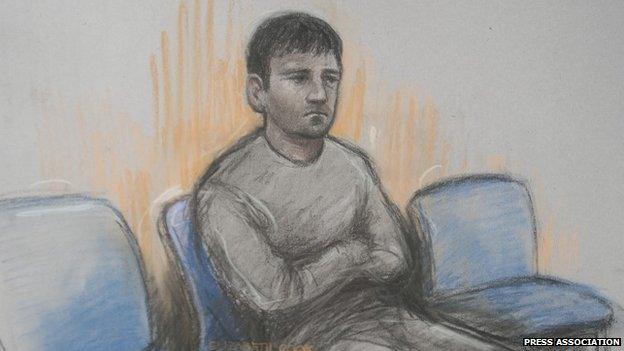
Navinder Singh Sarao, asked the court: "How is this allowed to go on man?"
A UK trader accused of contributing to the 2010 Wall Street "flash crash" has protested his innocence in court, saying he did not "do anything wrong".
Navinder Singh Sarao, 36, has been charged with wire fraud, commodities fraud and market manipulation by the US Justice Department (DOJ).
Mr Sarao denies the charges but was remanded in custody for the third time after failing to raise £5.05m in bail.
His lawyers' request that bail be lowered to £50,000 was refused.
His legal team told Westminster Magistrates' Court he had been unable to raise the funds required by US authorities because they had frozen his assets.
Wearing a grey sweatshirt and tracksuit bottoms, he had sat calmly in the dock until he heard his bail conditions would not be changed.
He then spoke out to in court to plead his innocence claiming he had not "done anything wrong apart from being good at my job".
"How is this allowed to go on, man?" he added.
Appeal
Mr Sarao's legal team will now consider an appeal to the High Court.
Two weeks ago, Mr Sarao was granted bail pending a full extradition hearing later this year provided he produced £5.05m and met other bail conditions.
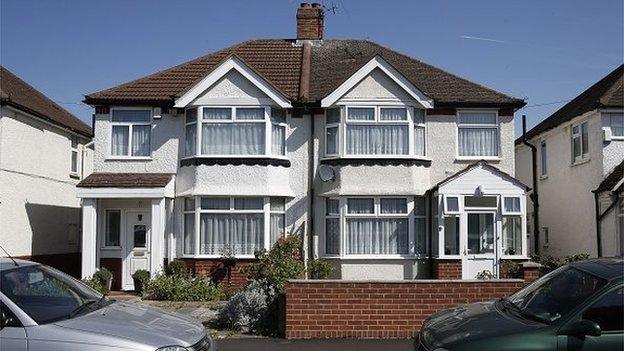
Navinder Singh Sarao operated Nav Sarao Futures from this semi-detached house in Hounslow, west London
Those bail conditions state that he must stay at his parents' address in Hounslow, west London, each night, and cannot travel internationally or use the internet.
A review date of the case remains as 26 May, but the date for a full extradition hearing has been pushed back from August to 24-25 September.
The DoJ claims that Mr Sarao and his firm, Nav Sarao Futures, made £26m ($40m) illegally over five years.
He has been accused of using an "automated trading program" to manipulate markets, and of contributing to the flash crash of 6 May 2010. On that day, the Dow Jones index lost 700 points in a matter of minutes - wiping about $800bn off the value of US shares - before recovering just as quickly.
'Significant profits'
Regulators blamed high-frequency traders placing multiple sell orders for the crash.
High-speed trading is where share dealers use computer algorithms to buy and sell stocks in milliseconds.
The DoJ said a fortnight ago that "Sarao's alleged manipulation earned him significant profits and contributed to a major drop in the US stock market on May 6, 2010".
Its statement continued: "By allegedly placing multiple, simultaneous, large-volume sell orders at different price points - a technique known as 'layering' - Sarao created the appearance of substantial supply in the market."
It is alleged Mr Sarao was then able to buy and sell futures contracts tied to the value of the share indexes.
- Published6 May 2015
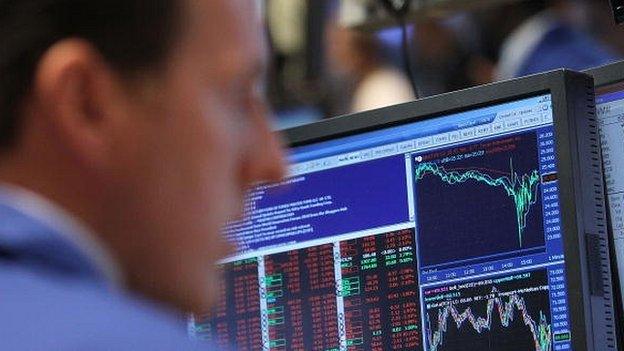
- Published22 April 2015
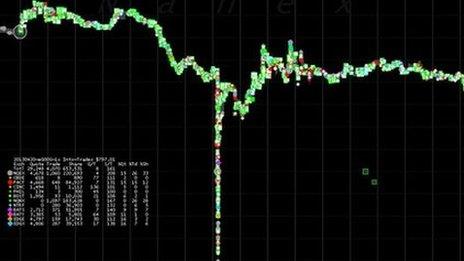
- Published22 April 2015

- Published22 April 2015
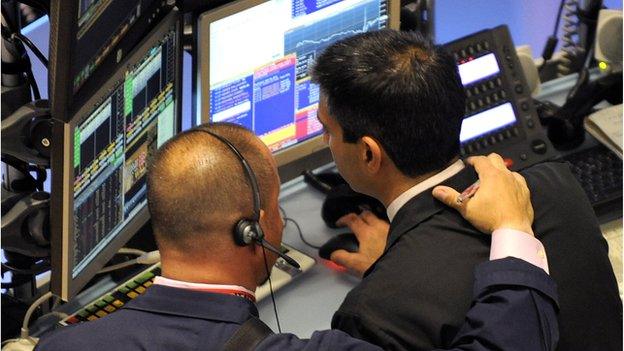
- Published29 April 2015
